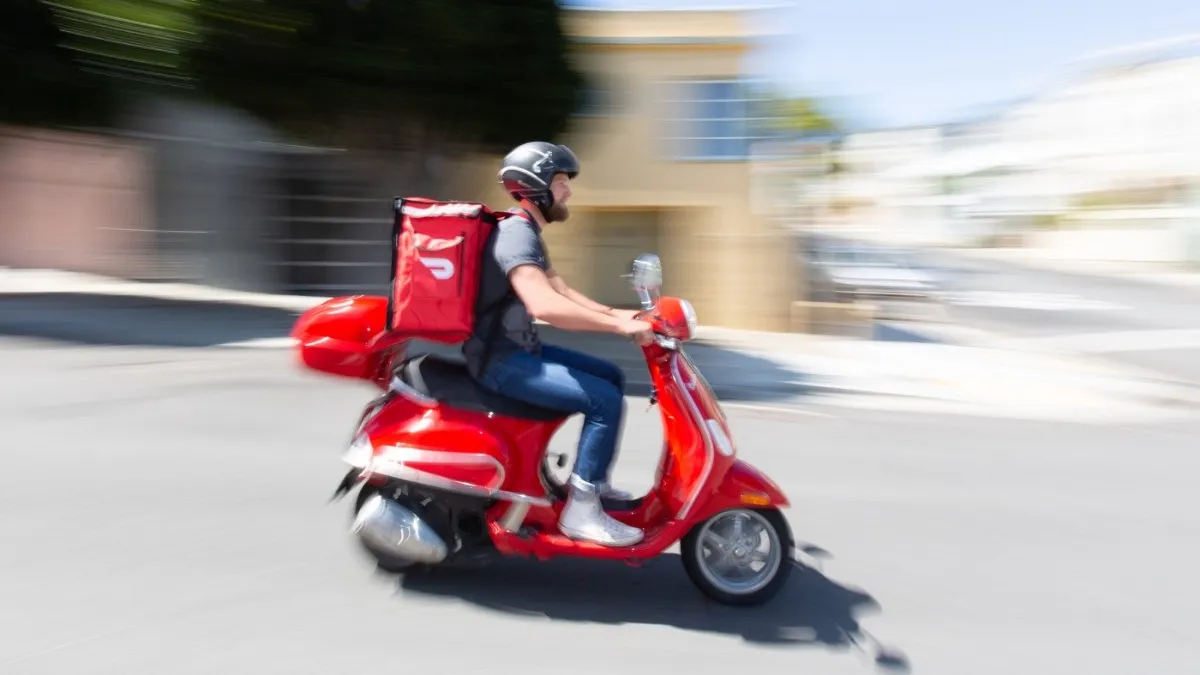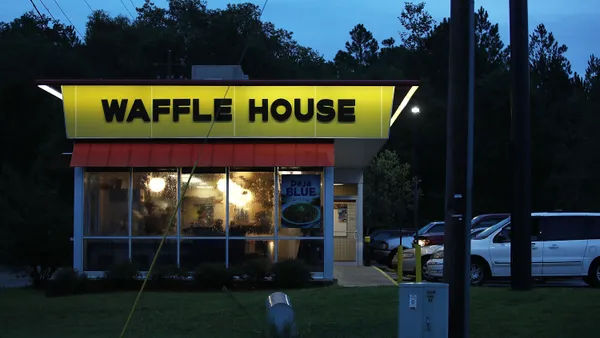Dive Brief:
- With the launch of DoorDash in Anchorage, Alaska; Billings, Bozeman and Missoula, Montana; and Sioux Falls, South Dakota, the third-party delivery platform is now available in all 50 states, according to a press release.
- The platform also expanded into Fargo, North Dakota; Morgantown and Huntington, West Virginia; and Cheyenne, Wyoming.
- To celebrate the expansion, DoorDash is offering 50 cent delivery charges for orders $10 or more for all U.S. customers on Wednesday. Customers in its newest markets can get a discounted $1 delivery fee for all orders over $15 placed from 11 a.m. to 10 p.m. through Feb. 16.
Dive Insight:
While other competitors have expanded within the last year, DoorDash has made one of the more aggressive pushes nationwide, growing from 600 locations to 3,300 cities within the last year. The company also has chosen to enter a few under-penetrated markets that could help it gain a competitive advantage. It appears to be the only nationwide provider in Anchorage, for example.
Additional expansion in the segment shows that the young industry still hasn't reached full saturation. GrubHub has also been growing, but at a slower pace — adding over 100 markets to its lineup in 19 states last year. Uber Eats, which was available to over 50% of the U.S. population as of October, plans to reach 70% of the country’s population in the near future, according to Fortune. Postmates entered over 100 new cities last year as well. Waitr also bought BiteSquad last year, expanding into several mid-tier markets in the Midwest and bringing its footprint to 500 cities across 22 states.
Many of the brands also have been expanding partnerships with key brands to gain a competitive edge and provide more options to consumers. Uber Eats partnered with Starbucks to bring delivery to 2,000 restaurants this year. Yum Brands invested $200 million last year in Grubhub with plans to integrate delivery and POS platforms for KFC and Taco Bell.
DoorDash, which partners with Wendy’s, The Cheesecake Factory, Chick-fil-A and Chipotle, will also work with local eateries such as Dipper Donuts in Anchorage, Red Tractor Pizza in Bozeman and Izumi Sushi in Fargo.
Despite platforms expanding across multiple markets, revenue growth may be limited. While online food delivery, which is worth about $18 billion, is expected to grow 7.3% annually to $24 billion by 2023, according to Statista, platform-to-consumer delivery is still only a fraction of the market. The restaurant-to-consumer delivery market is worth about $16 billion in revenue while platforms bring in about $2 billion and are expected to reach close to $3 billion in revenue over the next five years.
Analysts told Restaurant Dive that within the next five to 10 years, the market will likely consolidate to two or three top brands since the current amount of companies is not sustainable; eventually these companies will start to lose market share and no longer be valuable. It's already happened in London as Amazon Restaurants ceased operations last year after not being able to gain much market share. Given the growing competition and new companies entering the market within the last few years, it will be interesting to see which brands will dominate and which will fold.














